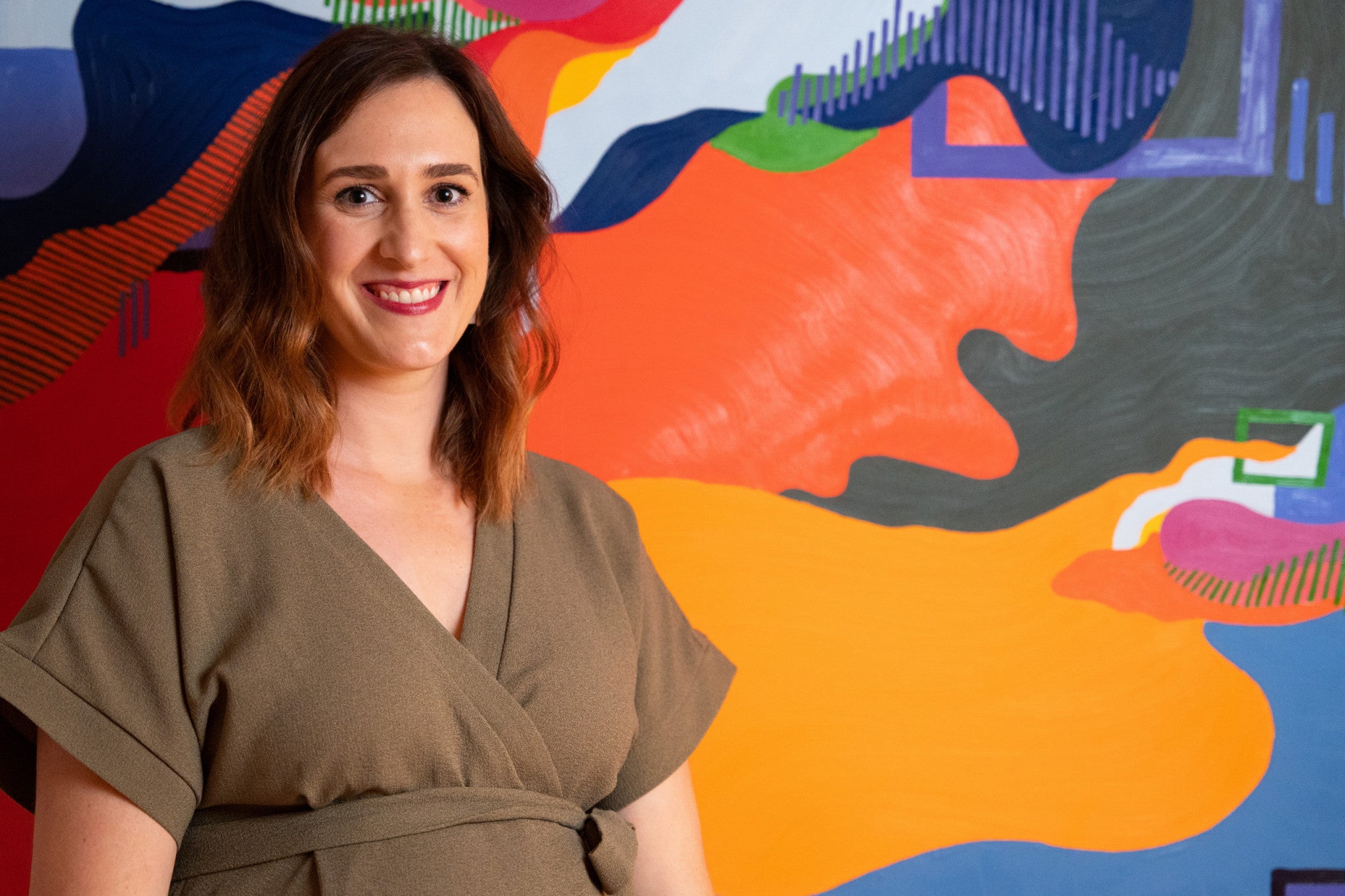Katie Hirsch had never planned on having a career within the world of contemporary art. In fact, she spent five years in graduate school studying pre-Columbian Mesoamerican ceramics.
“This was not at all the trajectory that I thought my life would take,” she says with a laugh.
Hirsch was appointed director of the Halsey Institute of Contemporary Art in April. Prior to that, she served in the role on an interim basis for several months following the retirement of longtime Halsey director Mark Sloan. Although her background might seem a little incongruous with the world of modern art, Hirsch says she was immediately drawn to the Halsey from the first time she set foot in its gallery.
“At the end of the day, any object, any piece of visual culture, any artwork is about something somebody wanted to say,” says Hirsch. “It’s a window into a person’s mind or a moment in a culture or a moment in a society. And so, ultimately, I think, that umbrella of interest crosses time and space from what I had been studying to the Halsey.”
Before joining the institute in 2016, Hirsch worked for Spoleto Festival USA and island6 Arts Center in Shanghai, China. She has served in a variety of roles at the Halsey, including as a curator and director of strategic partnerships.
Now at the helm, Hirsch is excited for what’s ahead. The institute recently partnered with Colorado Springs Fine Arts Center at Colorado College and the Southwest School of Fine Arts in San Antonio to produce an exhibition by Peruvian American artist Kukuli Velarde. With support from a grant through the National Endowment of the Arts, the three institutions are pooling their resources and expertise to create an exhibition of the artist’s work that will debut in 2022.
“It’s an exciting model because it allows us to link arms with other institutions and do something beyond our normal scope,” she says.
Passionate and focused, Hirsch is determined to keep pushing the Halsey forward, even amid the pandemic, which quieted much of the arts world. And the Halsey was no different, taking much of its programming online for 2020. In January, the institute celebrated having art on its walls again with the exhibition Geolocation, as visitors were slowly welcomed back.
Then, in May, the Halsey debuted an exhibition of video and multimedia works by Jibade-Khalil Huffman titled You Are Here and an exhibition of photographs and objects by Dan Estabrook titled Wunderkammer. Both exhibitions are on view through July 17.
“I’d love to see more and more people coming back to the galleries to view the exhibitions as things become safer,” says Hirsch, who served as curator for Huffman’s exhibit. “I’d love for our space to be a part of people’s day, a part of people’s week, a part of their lives, not just a special visit.”
Hirsch’s hope is that people discover a lot more than just art.
“I just I love finding ways to get people to ask questions about the things that they believe,” she says. “And art is so uniquely situated to allow people to do that.”




